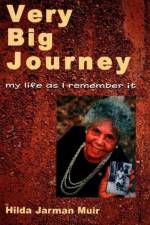- Women from Ernabella and Their Art
av Ute Eickelkamp
356
This collection of histories, in both written and illustrative form, from the women and men of Ernabella, in northern South Australia, tells the story of the interaction between white and black women that led to the establishment and development of a significant school of Australian art, Ernabella Arts Inc, which celebrated its 50th anniversary in 1998. From ''first missionary coming'', through the terror of the nearby atomic bomb tests in the 1950s, to the commercial and artistic successes of the 1990s, the stories speak of great losses and regrets, but also of remarkable achievements, and of the skill and strength of the individuals whose voices we hear. At Ernabella Arts, all the artistic output is produced by women and this, one of the oldest centres of contemporary Aboriginal art in the country, is best known for its distinctive design and its use of new and innovative media, such as those used in textile art. The beautiful batiks produced at Ernabella have been exhibited around the world and the artists are sought after as teachers all over Australia, and internationally. These artists, when asked to explain their designs by those who are unaware of their non-representational nature, say ''don''t ask for stories''. We are lucky, however, that they have chosen to record their stories in other ways, and in the process have given their readers a striking insight into their lives and work.










